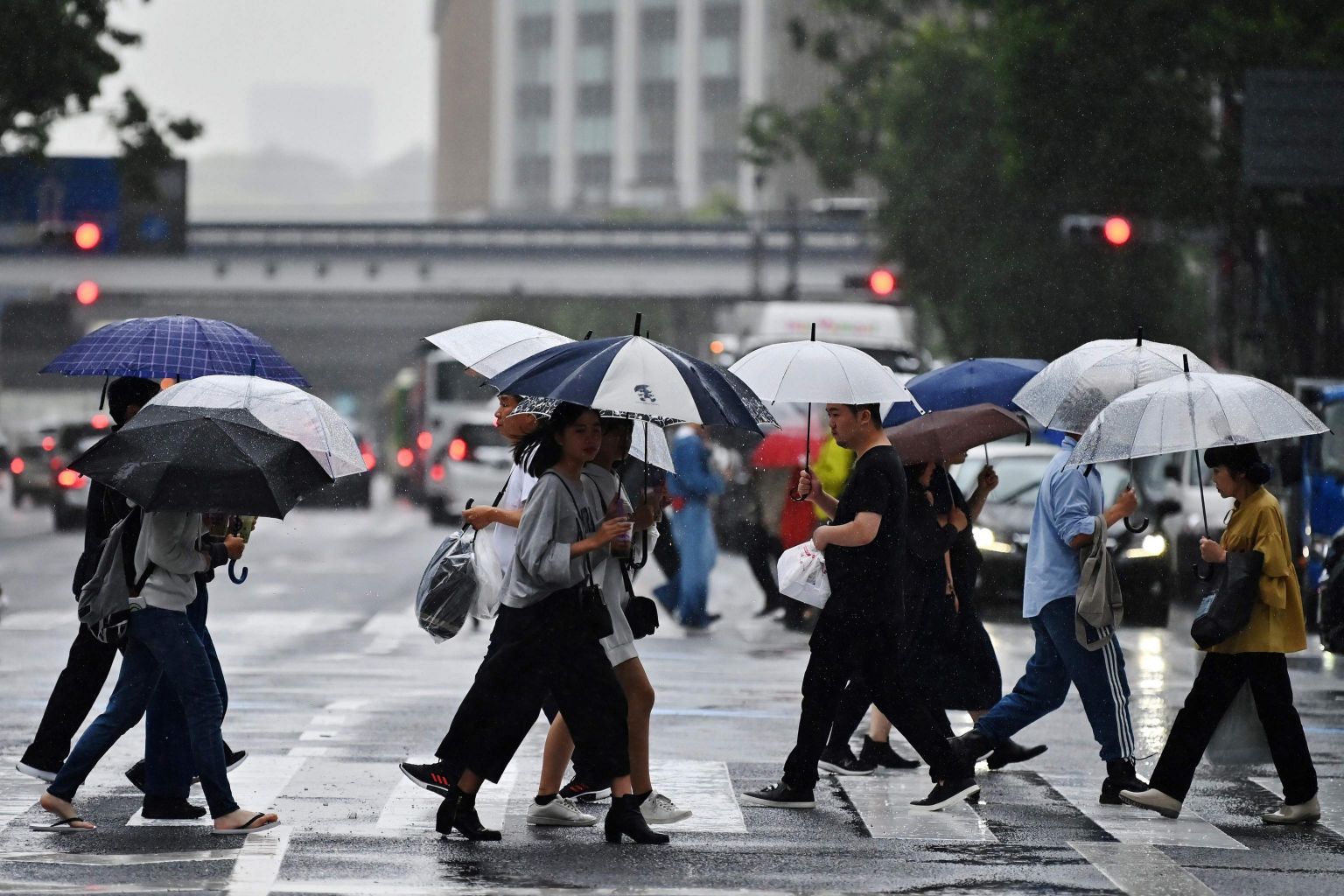Entire cities in Japan ordered to evacuate as record rainfall lashes south-western region
Sign up now: Get insights on Asia's fast-moving developments

People cross a street during a rainy afternoon in Tokyo, Japan, on May 21, 2019.
PHOTO: AFP
Follow topic:
TOKYO - About 1.12 million people in southwestern Japan were ordered to flee to safety on Wednesday (July 3), as heavy rain continued to lash the region bringing floods to widespread areas and threatening deadly landslides.
The evacuation orders, as at 9pm local time Wednesday night (8pm in Singapore), remained in effect for vast areas of Kagoshima, Miyazaki and Kumamoto prefectures.
The deluge, which began last Friday (June 28), is forecast to continue until at least Thursday (July 4) before storm clouds move east.
Many areas have seen more rain in a single day than in a typical month of July, the weatherman said, as residents in entire cities, like Kagoshima City, Kirishima and Aira, were told to seek shelter.
Some 869,000 people were advised to evacuate their homes, while 1.32 million others have been told to prepare to evacuate, based on a new five-tier heavy rain disaster warning system launched this year in the wake of deadly rains last July that left 225 dead.
Under this system, Level 5 occurs when disaster strikes. At Level 4, evacuation orders and advisories are imposed, though orders are more urgent than advisories. Level 3 is when residents are asked to get ready to flee.
Prime Minister Shinzo Abe vowed on Wednesday to spare no effort in taking prompt measures to protect lives. Some 14,000 Self-Defence Force personnel have been placed on standby to assist emergency responders.
The deluge has claimed one victim: a woman in her 70s died on Monday (July 1) after her home was partially buried by a mudslide.
A Unesco World Heritage Site, the Terayama charcoal kiln in Kagoshima that dates to 1858, has also been damaged.
The Japan Meteorological Agency attributed the heavy rains to an active rainy seasonal front that remains above the south-western island of Kyushu, thereby creating unstable weather conditions. It warned that the downpour may yet intensify overnight, asking the elderly and handicapped to seek safety early without waiting for any order.
While this is typically the wet season for much of Japan before a scorching summer, the rains have been heavier - and deadlier - in recent years.
Last July's rains killed 225 people in 15 prefectures - many in Hiroshima, Ehime and Okayama - as numerous areas got up to three times the average monthly precipitation.
In 2014, torrential rain caused landslides that killed more than 70 people in Hiroshima.


